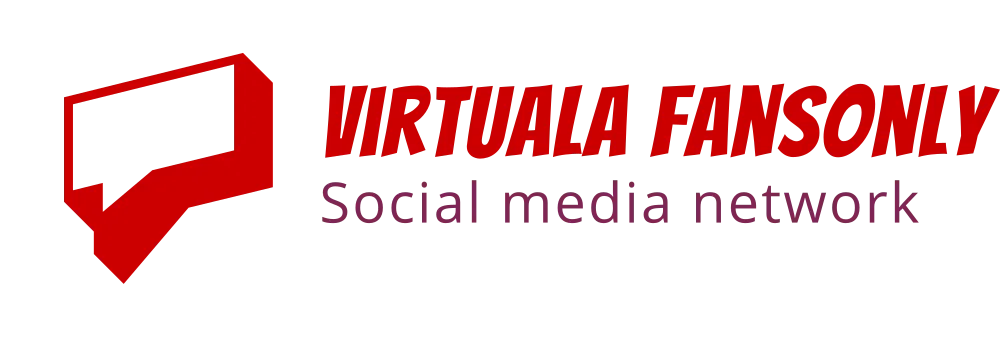eveloping Leadership and Advocacy in Nursing: A Complete Guide to NURS FPX 4055 and NURS FPX 4065 Assessments[/b]
As healthcare continues to evolve, nurses are taking on increasingly complex roles—not only in direct patient care, but also in health education, care coordination, advocacy, and community leadership. Capella University’s RN-to-BSN program supports this growth through courses like NURS FPX 4055[/b] and NURS FPX 4065[/b], which are structured to help nurses develop critical thinking, communication, and planning skills. The assessments in these courses are designed to challenge students to create real-world solutions that improve patient outcomes and population health.
In this blog post, we’ll explore four essential assignments: NURS FPX 4055 Assessment 3[/b], NURS FPX 4055 Assessment 4[/b], NURS FPX 4065 Assessment 1[/b], and NURS FPX 4065 Assessment 2[/b]. Each assessment plays a unique role in shaping a well-rounded nursing professional ready to address both clinical and public health needs.
NURS FPX 4055 Assessment 3: Evaluating Health Promotion Program Effectiveness[/b]
NURS FPX 4055 Assessment 3[/b] focuses on the evaluation of a health promotion program’s effectiveness. Students are expected to analyze an implemented program—either hypothetical or real—based on measurable outcomes and evidence-based strategies.
In this assignment, nursing students will:
[list]
Choose a health promotion program related to a specific issue, such as obesity prevention, maternal health, or smoking cessation.
Evaluate the program's objectives, activities, and outcomes using data.
Assess the strengths and weaknesses of the program.
Recommend strategies to enhance its impact, including improved communication, education, or outreach.
[/list]
This assignment builds students’ ability to assess whether health initiatives meet intended goals and align with community needs. It prepares them to work in public health roles where accountability and program impact are key. To see how to structure your evaluation, visit the [url=
https://tutorsacademy.co/nurs-fpx-4055-assessment-3/" data-start=2047" data-end=2129]NURS FPX 4055 Assessment 3[/url] guide.
NURS FPX 4055 Assessment 4: Health Promotion Plan[/b]
Following the evaluation process, NURS FPX 4055 Assessment 4[/b] invites students to create a new or improved health promotion plan. This assessment encourages creativity, evidence-based thinking, and cultural sensitivity—all vital skills for addressing health disparities in diverse populations.
To succeed in this assignment, students must:
[list]
Identify a health issue affecting a target population (e.g., adolescent mental health, diabetes in older adults).
Propose clear, measurable goals and strategies based on community needs and evidence.
Integrate health literacy principles and culturally appropriate education materials.
Address barriers such as cost, access, stigma, or socioeconomic challenges.
[/list]
This plan must be rooted in research but practical enough to be implemented in real-world settings. For a full breakdown on crafting a compelling health promotion initiative, refer to the [url=
https://tutorsacademy.co/nurs-fpx-4055-assessment-4-health-promotion-plan/" data-start=3100" data-end=3204]NURS FPX 4055 Assessment 4[/url] page.
NURS FPX 4065 Assessment 1: Interprofessional Collaboration Through a Conference Call[/b]
Communication is a cornerstone of effective care coordination, and NURS FPX 4065 Assessment 1[/b] teaches students how to engage in interprofessional collaboration through a simulated conference call scenario. The purpose of this assessment is to demonstrate how clear, respectful communication among healthcare providers supports patient outcomes and safety.
In this task, students are required to:
[list]
Simulate a multidisciplinary team meeting, such as a discharge planning or chronic disease management conference call.
Present a patient scenario and coordinate with professionals like social workers, physicians, or case managers.
Demonstrate effective communication techniques, such as active listening, clarity, assertiveness, and collaboration.
Reflect on how the team interaction could influence patient care plans and outcomes.
[/list]
This exercise enhances interpersonal skills while emphasizing the nurse’s role as a leader in collaborative decision-making. Explore the full assignment structure and tips on the [url=
https://tutorsacademy.co/nurs-fpx-4065-assessment-1-conference-call/" data-start=4330" data-end=4428]NURS FPX 4065 Assessment 1[/url] guide.
NURS FPX 4065 Assessment 2: Community Resources and Ethical Considerations[/b]
NURS FPX 4065 Assessment 2[/b] focuses on the nurse’s responsibility to identify and connect patients with appropriate community resources. It also brings in ethical considerations such as fairness, autonomy, consent, and access to care.
Key objectives of this assessment include:
[list]
Selecting a vulnerable or underserved patient population (e.g., refugees, the elderly, low-income families).
Identifying local or national resources available for support (e.g., housing services, food programs, counseling).
Developing a care coordination strategy that leverages these resources.
Addressing ethical issues related to confidentiality, equity, and cultural sensitivity.
[/list]
This assignment reinforces the importance of advocacy and case management in nursing. It encourages students to think beyond the hospital walls and into the communities they serve. A complete guide to approaching this assessment can be found on the [url=
https://tutorsacademy.co/nurs-fpx-4065-assessment-2/" data-start=5446" data-end=5528]NURS FPX 4065 Assessment 2[/url] page.
Final Thoughts: Bridging Theory and Practice in Nursing Education[/b]
Together, these assessments—NURS FPX 4055 Assessment 3[/b], NURS FPX 4055 Assessment 4[/b], NURS FPX 4065 Assessment 1[/b], and NURS FPX 4065 Assessment 2[/b]—demonstrate the holistic nature of nursing practice today. From evaluating and designing public health initiatives to collaborating with interprofessional teams and navigating ethical care delivery, each assignment helps shape the nurse of the future.
Students gain practical skills in communication, planning, advocacy, and ethical reasoning. They learn to apply research to real problems and take on leadership roles that go far beyond bedside care. Whether you’re planning a community health fair or coordinating care for a complex patient, these assessments give you the tools to lead, educate, and empower.
In a rapidly changing healthcare system, nurses must be prepared to solve problems creatively and compassionately. These assignments ensure that Capella’s graduates do just that—delivering informed, equitable, and community-centered care with confidence.
Ask ChatGPT
eveloping Leadership and Advocacy in Nursing: A Complete Guide to NURS FPX 4055 and NURS FPX 4065 Assessments[/b]
As healthcare continues to evolve, nurses are taking on increasingly complex roles—not only in direct patient care, but also in health education, care coordination, advocacy, and community leadership. Capella University’s RN-to-BSN program supports this growth through courses like NURS FPX 4055[/b] and NURS FPX 4065[/b], which are structured to help nurses develop critical thinking, communication, and planning skills. The assessments in these courses are designed to challenge students to create real-world solutions that improve patient outcomes and population health.
In this blog post, we’ll explore four essential assignments: NURS FPX 4055 Assessment 3[/b], NURS FPX 4055 Assessment 4[/b], NURS FPX 4065 Assessment 1[/b], and NURS FPX 4065 Assessment 2[/b]. Each assessment plays a unique role in shaping a well-rounded nursing professional ready to address both clinical and public health needs.
NURS FPX 4055 Assessment 3: Evaluating Health Promotion Program Effectiveness[/b]
NURS FPX 4055 Assessment 3[/b] focuses on the evaluation of a health promotion program’s effectiveness. Students are expected to analyze an implemented program—either hypothetical or real—based on measurable outcomes and evidence-based strategies.
In this assignment, nursing students will:
[list]
Choose a health promotion program related to a specific issue, such as obesity prevention, maternal health, or smoking cessation.
Evaluate the program's objectives, activities, and outcomes using data.
Assess the strengths and weaknesses of the program.
Recommend strategies to enhance its impact, including improved communication, education, or outreach.
[/list]
This assignment builds students’ ability to assess whether health initiatives meet intended goals and align with community needs. It prepares them to work in public health roles where accountability and program impact are key. To see how to structure your evaluation, visit the [url=https://tutorsacademy.co/nurs-fpx-4055-assessment-3/" data-start=2047" data-end=2129]NURS FPX 4055 Assessment 3[/url] guide.
NURS FPX 4055 Assessment 4: Health Promotion Plan[/b]
Following the evaluation process, NURS FPX 4055 Assessment 4[/b] invites students to create a new or improved health promotion plan. This assessment encourages creativity, evidence-based thinking, and cultural sensitivity—all vital skills for addressing health disparities in diverse populations.
To succeed in this assignment, students must:
[list]
Identify a health issue affecting a target population (e.g., adolescent mental health, diabetes in older adults).
Propose clear, measurable goals and strategies based on community needs and evidence.
Integrate health literacy principles and culturally appropriate education materials.
Address barriers such as cost, access, stigma, or socioeconomic challenges.
[/list]
This plan must be rooted in research but practical enough to be implemented in real-world settings. For a full breakdown on crafting a compelling health promotion initiative, refer to the [url=https://tutorsacademy.co/nurs-fpx-4055-assessment-4-health-promotion-plan/" data-start=3100" data-end=3204]NURS FPX 4055 Assessment 4[/url] page.
NURS FPX 4065 Assessment 1: Interprofessional Collaboration Through a Conference Call[/b]
Communication is a cornerstone of effective care coordination, and NURS FPX 4065 Assessment 1[/b] teaches students how to engage in interprofessional collaboration through a simulated conference call scenario. The purpose of this assessment is to demonstrate how clear, respectful communication among healthcare providers supports patient outcomes and safety.
In this task, students are required to:
[list]
Simulate a multidisciplinary team meeting, such as a discharge planning or chronic disease management conference call.
Present a patient scenario and coordinate with professionals like social workers, physicians, or case managers.
Demonstrate effective communication techniques, such as active listening, clarity, assertiveness, and collaboration.
Reflect on how the team interaction could influence patient care plans and outcomes.
[/list]
This exercise enhances interpersonal skills while emphasizing the nurse’s role as a leader in collaborative decision-making. Explore the full assignment structure and tips on the [url=https://tutorsacademy.co/nurs-fpx-4065-assessment-1-conference-call/" data-start=4330" data-end=4428]NURS FPX 4065 Assessment 1[/url] guide.
NURS FPX 4065 Assessment 2: Community Resources and Ethical Considerations[/b]
NURS FPX 4065 Assessment 2[/b] focuses on the nurse’s responsibility to identify and connect patients with appropriate community resources. It also brings in ethical considerations such as fairness, autonomy, consent, and access to care.
Key objectives of this assessment include:
[list]
Selecting a vulnerable or underserved patient population (e.g., refugees, the elderly, low-income families).
Identifying local or national resources available for support (e.g., housing services, food programs, counseling).
Developing a care coordination strategy that leverages these resources.
Addressing ethical issues related to confidentiality, equity, and cultural sensitivity.
[/list]
This assignment reinforces the importance of advocacy and case management in nursing. It encourages students to think beyond the hospital walls and into the communities they serve. A complete guide to approaching this assessment can be found on the [url=https://tutorsacademy.co/nurs-fpx-4065-assessment-2/" data-start=5446" data-end=5528]NURS FPX 4065 Assessment 2[/url] page.
Final Thoughts: Bridging Theory and Practice in Nursing Education[/b]
Together, these assessments—NURS FPX 4055 Assessment 3[/b], NURS FPX 4055 Assessment 4[/b], NURS FPX 4065 Assessment 1[/b], and NURS FPX 4065 Assessment 2[/b]—demonstrate the holistic nature of nursing practice today. From evaluating and designing public health initiatives to collaborating with interprofessional teams and navigating ethical care delivery, each assignment helps shape the nurse of the future.
Students gain practical skills in communication, planning, advocacy, and ethical reasoning. They learn to apply research to real problems and take on leadership roles that go far beyond bedside care. Whether you’re planning a community health fair or coordinating care for a complex patient, these assessments give you the tools to lead, educate, and empower.
In a rapidly changing healthcare system, nurses must be prepared to solve problems creatively and compassionately. These assignments ensure that Capella’s graduates do just that—delivering informed, equitable, and community-centered care with confidence.
Ask ChatGPT











